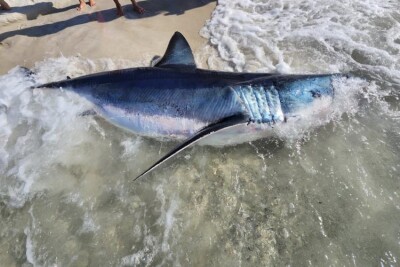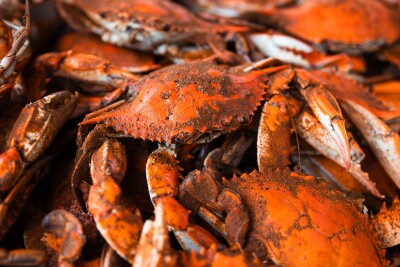Cordovans are hoping to revive a long lost tanner crab fishery in Prince William Sound as a step towards keeping the town’s waterfront working year round.
Tanner crab. U.S. Fish and Wildlife Service photo.The crab fishery produced up to 14 million pounds in the early 1970s and had declined to about half a million pounds by the time it was closed after the 1989 Exxon Valdez oil spill. State managers believe the tanner stock remains depleted and cannot provide for a commercial fishery, but locals believe it’s time to take a closer look.
“It’s largely the opinion of the people around here that the fishery could support an expanded harvest,” said John Whissel, director of natural resources for the Native Village of Eyak. “The goal here is to get away from the boom and bust cycle, where the town doubles in size in May and then shrinks when the salmon fisheries wind down.”
Over the past year the town has turned out to support expanding research for the crab fishery in meetings with state commissioners and local legislators.
“This is as much of a grassroots effort as I’ve ever seen in terms of getting some science done. Everyone understands the benefits of having canneries and boats working year round,” Whissel said.
State biologists have conducted periodic trawl surveys in Prince William Sound since 1991, but Cordovans believe that method does not accurately count densities of crab in other regions. The Department of Fish and Game acknowledged in a memo that the existing survey “does not reflect tanner crab abundance outside the survey grounds” but they believe the trends “are reflective of Tanners throughout the Sound.”
Starting this fall, Cordovans plan to supplement the trawl data by doing something different: A mark recapture study.
“Marking and then recapturing crab is a pretty standard measurement of densities and age structures, and much more involved than a trawl survey,” Whissel said, adding that the Eyak tribe is now working out the study design and readying funding proposals for federal matching grants to jumpstart the Tanner project this winter.
State crab biologists said they will provide the Board of Fisheries with information next March “that could lead to a development of a harvest strategy and allow additional harvest,” according to ADF&G Commissioner Sam Cotten.
Meanwhile, Cordovans will begin their study with tanners pulled up in their subsistence pots this fall. Whissel is hopeful the project will serve as a model to evaluate other potential fisheries in the region.
“There’s other opportunities around here and it would be good for our town and for our state,” he said. “With oil prices being what they are and the tax rate being what it is, commercial fishing could play a larger role in the state budget if we gave them more chances to do that.”
Whissel called the crab project collaboration by the state and tribal government “an exciting new way forward.”
“The state will find that it is able to do a lot by collaborating with tribes because we have access to different pools of federal dollars in times of tightening budgets,” he said. “Coming together on projects like this instead of being territorial is going to be the way we do things in the future.”






